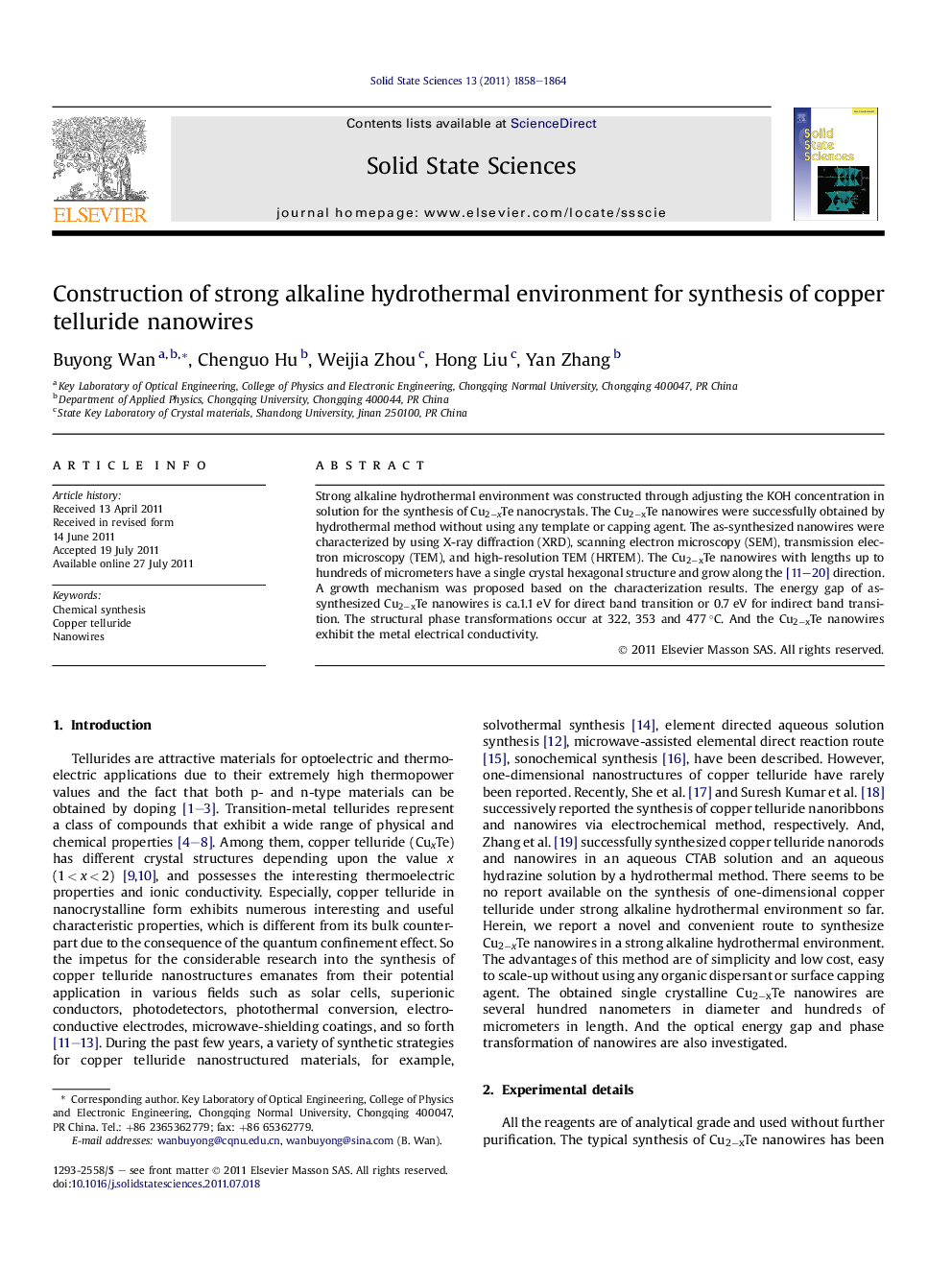| Article ID | Journal | Published Year | Pages | File Type |
|---|---|---|---|---|
| 1505379 | Solid State Sciences | 2011 | 7 Pages |
Strong alkaline hydrothermal environment was constructed through adjusting the KOH concentration in solution for the synthesis of Cu2−xTe nanocrystals. The Cu2−xTe nanowires were successfully obtained by hydrothermal method without using any template or capping agent. The as-synthesized nanowires were characterized by using X-ray diffraction (XRD), scanning electron microscopy (SEM), transmission electron microscopy (TEM), and high-resolution TEM (HRTEM). The Cu2−xTe nanowires with lengths up to hundreds of micrometers have a single crystal hexagonal structure and grow along the [11], [12], [13], [14], [15], [16], [17], [18], [19] and [20] direction. A growth mechanism was proposed based on the characterization results. The energy gap of as-synthesized Cu2−xTe nanowires is ca.1.1 eV for direct band transition or 0.7 eV for indirect band transition. The structural phase transformations occur at 322, 353 and 477 °C. And the Cu2−xTe nanowires exhibit the metal electrical conductivity.
Graphical abstractFigure optionsDownload full-size imageDownload as PowerPoint slideHighlights►Untra-long Cu2−xTe nanowires are synthesized via a hydrothermal route. ►KOH concentration in solution can effectively adjust the morphology of products. ►The formation mechanism of nanowires has been discussed. ►The optical gap of the as-synthesized Cu2−xTe nanowires has been investigated. ►The phase transition has been observed in as-obtained Cu2−xTe nanowires.
